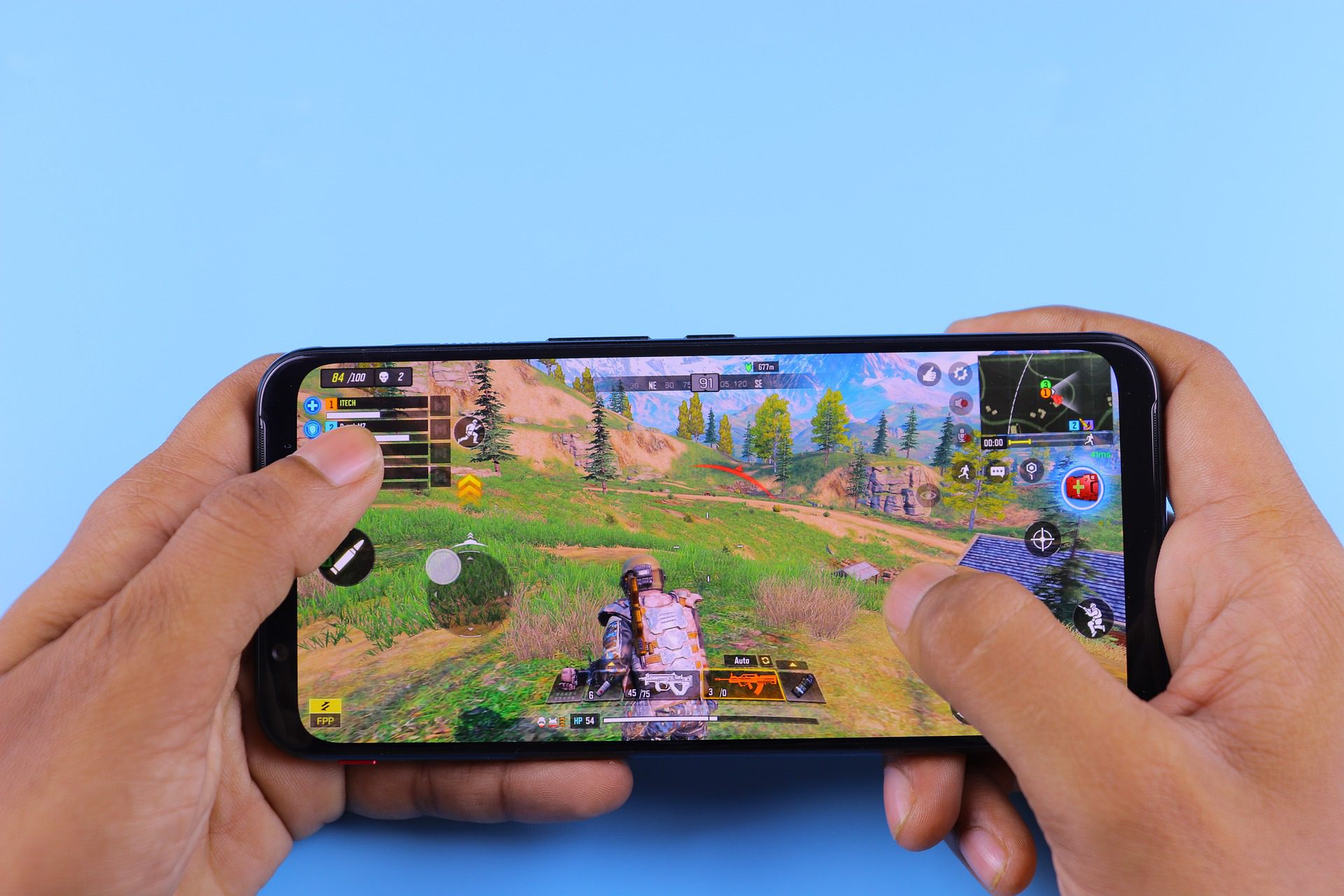What Is In-Game Advertising and How It Can Increase Your Game’s Revenue?

With an estimated 3.09 billion gamers worldwide (source: Exploding Topics), video games are a compelling entertainment AND advertising channel. Anyone who has played one lately knows how immersive they have become. The level of detail in today’s games takes players to another world where they’re engaged with sights, sounds, and interactive gameplay.
Marketers looking to reach an engaged audience can achieve excellent engagement and retention with clever in-game advertising. 73 percent of gamers are happy with the ad-based model of today’s video games. This shows that in-game advertising is a creative monetization strategy you can use to boost your game’s revenue.
What is in-game advertising?
As the name suggests, in-game advertising is the placement of ads within video games. It allows marketers to place custom messaging in games to connect with highly engaged users. Ad formats include static and dynamic banners, video, and audio ads.
Examples of in-game ads include huge billboards featuring a company’s logo looking to connect with the gaming audience. Racing games can feature ads from motor companies such as Ferrari and Mercedes Benz. Advertisers have been creative in organically integrating the games to ensure the ads complement and do not interrupt the user flow.
Given that video games are so immersive, the full effect of the ad registers with the viewers to help advertisers improve brand awareness and recall. The interactivity of video games also allows for more subtle forms of advertising. Rather than bombarding users with their logos and slogans, advertisers can weave their messages into the gaming experience in an organic way. This way, the ads become a feature that enhances the gaming experience rather than a distraction.
In-game advertising options are also customizable because most consoles are connected to the internet. Therefore, advertisers can update their ads at will, and the consoles will adjust the content immediately.

In-game economics
By 2025, in-game ad spend for mobile games alone is expected to reach 4.45 billion dollars (source: Statista). However, despite the rise in the adoption of in-game advertising, many advertisers still hold stereotypical misconceptions about who gamers are, which ad formats are the best, and the popular types of video games.
This is the general feeling among advertisers who have never published ads in mobile games. Within this group, most people are unaware of the scale of the global gaming audience or the revenue generated by video games.
So, what does this mean for advertisers and developers?
The fact that in-game marketing is not yet saturated gives advertisers the unique advantage of connecting with consumers in the immersive gaming environment. Consumers will not skip the ads since they have naturally been integrated into the game for a more holistic advertising experience.
On the other hand, developers can educate media buyers about the benefits of placing ads within the video game environment. They can share the power of dynamic ad formats and how the immersive gaming environment boosts brand awareness and recall.
Why do brands invest in in-game advertising?
In-game advertising has a lot of opportunities for brands looking to connect with engaged users. These ads allow brands to generate visibility on an advertising channel that is not yet saturated by the competition. Furthermore, choosing the right ad formats allows brands to differentiate themselves from the competition and target users more effectively.
What’s more, in-game marketing lets brands adapt their advertising in real time. With the customization options possible with in-game ads, creating targeted advertising messages for your audience becomes easy.
Other benefits that brands get for publishing ads in video games include:
Brand safety
Brands get to choose where their ads will appear. Careful game selection prevents ads from being displayed in inappropriate environments.
Engagement
Consumers are likelier to engage with a rewarded in-gaming ad than a sponsored social media post. The added value of in-app rewards encourages players to interact with the ad, thus helping brands connect with more people. Additionally, players are more open to purchasing ads published in video games than users in other advertising channels.
Involvement
Ads within games provide a greater sense of involvement than ads published elsewhere. Players are actively immersed in the gameplay experience, making it an ideal environment to gain their attention.
Measurement and ROI
It is easy for advertisers to track metrics such as engagement, reach, and completion rate. In-game ads allow brands to connect with consumers through focused promotional campaigns that incur low upfront fees and generate high returns.
Reach
The gaming audience has just crossed the 3 billion mark, and the numbers keep rising. The industry’s ability to integrate ad placements at a fraction of the cost of other forms of marketing provides brands with a cost-effective way to achieve their marketing goals.

Who can brands reach through in-game advertisements?
Back then, the picture that came to mind when you thought about a “gamer” was that of a young adolescent male with poor decision-making and purchasing power. But right now, there’s no such thing as a “typical gamer.” This is because we have just as many male gamers as female ones. Additionally, gaming now attracts a broad demographic, with the number of young and older gamers reasonably balanced.
This shows that marketers can reach a diverse audience when advertising within video games. The person coming across the ads could be anyone from a young, highly educated man with a range of pop culture interests to an older, highly traveled woman with high purchasing power. But these personas are very different, and brands cannot reach them with a one-size-fits-all strategy. Marketers must use data to understand how their target users consume digital media and their in-app interests. Doing so helps marketers gain the insights to develop better audience-targeting strategies for their in-game ads.
Types of in-game advertising
Paid promotions built into video games can take three formats. They include:
Dynamic in-game advertising
Dynamic advertising is the newest and most popular form of in-game advertising by media buyers. It allows advertisers to buy real-time, geo-targeting capable ads inside video games. The ads appear on virtual objects such as billboards, bus stops, and posters within the game environment.
Ad networks deliver dynamic in-game adverts in the same way banner ads are served on websites and other online properties. This has made it easy for advertisers to plan and launch a campaign since all they have to do is supply the creatives, and their ads will be integrated into appropriate titles on console, PC, and mobile games.
Static in-game advertising
Static advertising takes the form of an ad placement inside a video game. The ads are planned and integrated into a game during the development stage. This allows for a more customized integration where ads are added to a game’s storyline to allow players to interact with the brand when playing the game.
Static advertising is a fantastic channel for global brands to pursue because it doesn’t come with geo-targeting capabilities. However, it isn’t suitable for brands that want to run time-sensitive campaigns because static ads remain within a game for its entire lifecycle.
Advergaming
Advergaming differs from dynamic and static in-game advertising in that the whole game exists as an ad. These customized games are built for the sole purpose of promoting a product or brand. The games can be played on almost any platform, ranging from fully functional 3D games to simple browser mini-games.
Chipotle Scarecrow is just one example of an advergame. It was funded and built for Chipotle to create a fun and positive connection with users.
Figure 2: Chipotle Scarecrow. Source: Apple App Store
Paid advertising for game devs
Organic marketing is great, but it won’t take you all the way to game marketing success! Don’t be afraid to invest in paid advertising, as it can help you generate the reach and engagement you need. Still not convinced? Check out The Complete Paid Marketing Guide for Video Games!
In-game advertising is an effective channel for developers to boost game revenue. With brands looking to connect with consumers most engagingly, gaming is the perfect setup for those looking to drive awareness and earn loyal followers.
Gamers are also unbothered by the ad-based model of most games and enjoy the rewards they may offer. This will help you earn more money by generating more ad impressions and clicks.
Let us know if you think in-game ads are a viable monetization strategy.
Need help setting up in-game advertising for your game? Check out these strategies for inspiration.



